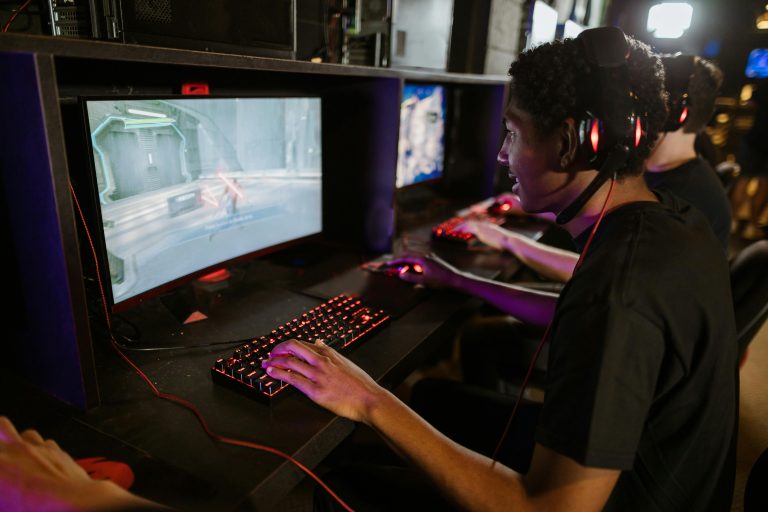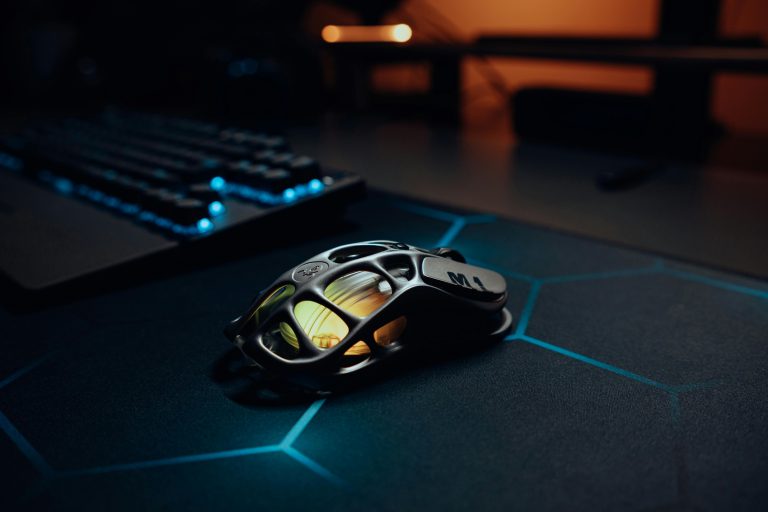
Remember the satisfying click of a mouse button, the sharp recoil of a controller rumble pack, or the distinct tactile sensation of pressing a mechanical keyboard key? For decades, these simple vibrations were the extent of our physical connection to digital worlds. But what if you could feel the subtle texture of a cobblestone path under your character’s boots, sense the distinct tension of drawing a bowstring, or experience the terrifying thud of a giant’s footsteps shaking the ground beneath you? This is no longer the stuff of science fiction. Haptic feedback technology is fundamentally rewriting the rules of player engagement, transforming gaming from a purely audio-visual experience into a deeply immersive, multi-sensory journey. It’s moving beyond simple rumble to create a new language of touch that allows us to truly feel the game.
From Rumble to Reality: The Evolution of Haptic Tech
The journey began with basic force feedback and rumble motors. The first major breakthrough was the Nintendo 64’s Rumble Pak in 1997, which introduced a generation to the concept of physical feedback. This was followed by more advanced eccentric rotating mass (ERM) motors in controllers like the Sony DualShock and Microsoft’s Xbox controller. These were an important first step, but their capabilities were limited to generic, loud vibrations that often felt more like a noisy distraction than an immersive feature.
The true revolution began with the advent of high-fidelity haptics. Technologies like Linear Resonant Actuators (LRAs), found in modern smartphones and the PlayStation 5’s DualSense controller, changed everything. Unlike ERMs, LRAs can produce a vast range of sensations—from sharp, precise taps to smooth, rolling waves—with incredible speed and accuracy. They can simulate textures, resistances, and environmental effects with a subtlety that was previously impossible. This shift from generic shaking to nuanced, context-aware feedback is the core of the haptic revolution, creating a tangible bridge between the player and the virtual environment.
The DualSense: A Case Study in Next-Gen Immersion
No product has demonstrated the power of advanced haptics more effectively than the PlayStation 5’s DualSense controller. It serves as the perfect case study for how this technology can redefine gameplay. The DualSense combines extremely precise LRAs with adaptive triggers that can dynamically change their resistance.
In a game like Astro’s Playroom (packed-in with the PS5), players can feel the difference between walking on glass, sand, and metal. The sensation of rain pattering on the controller or the wind resistance while gliding is palpable. The adaptive triggers are even more transformative. Drawing a bowstring creates a gradual tension, while a jammed gun will physically lock up and resist being fired. This isn’t just a gimmick; it provides crucial gameplay feedback and creates a powerful physical connection to the on-screen action. In racing games like Gran Turismo 7, the triggers can simulate the resistance of a car’s brake pedal or the loss of traction on a wet road, giving players a tactile understanding of their vehicle’s performance that rumble alone could never provide.
Beyond the Controller: Full-Body Haptic Suits and Accessories
While controllers are bringing haptics into the mainstream, the frontier of immersion lies in wearable technology. Companies like bHaptics and Teslasuit are developing vests, arm sleeves, and even full-body suits that integrate dozens of haptic actuators.
Imagine playing a horror game and feeling a creature’s breath on your back, or experiencing the direction of an incoming bullet hit in a first-person shooter. In a flight simulator, a haptic vest could simulate the G-forces of a sharp turn or the turbulence of flying through a storm. These devices translate in-game audio and data into precise vibrations across the body, creating a 360-degree tactile experience that pulls players deeper into the game world than ever before. As this technology becomes more affordable and widespread, it promises to become a standard for hardcore gamers and VR enthusiasts seeking the ultimate immersive experience.
Why It Matters: The Science of Deeper Immersion
The impact of haptic feedback goes beyond simple novelty; it is rooted in cognitive science. Immersion is a state of deep mental involvement where a player’s senses are tricked into accepting the virtual world as real. While sight and sound are powerful, the sense of touch is uniquely connected to our emotional and spatial perception.
Haptic feedback completes the sensory loop. It provides tangible confirmation of our actions, making virtual interactions feel more consequential and real. The tension of a trigger or the feel of a virtual surface grounds us in the game’s reality, reducing the cognitive load required to believe in the world and allowing for a more effortless and emotional connection. This heightened presence directly translates to increased player engagement, emotional investment, and ultimately, a more memorable and satisfying gaming experience.
The Future of Feel: What’s Next for Haptic Technology?
The evolution of haptic tech is accelerating rapidly. We are moving towards even more sophisticated and integrated systems. Future developments may include:
- Ultrasonic Mid-Air Haptics: Technology that creates tactile sensations in mid-air without any wearable device, allowing you to “feel” holograms or UI elements.
- Temperature Simulation: Actuators that can generate hot and cold sensations to simulate walking into a desert or a blizzard.
- Muscle Stimulation (EMS): Using mild electrical impulses to cause muscles to contract, simulating weight, resistance, or even the impact of a punch.
- Seamless VR Integration: Haptic gloves that allow for natural manipulation of virtual objects, feeling their shape, weight, and texture.
As these technologies mature and converge, the line between the physical and digital will continue to blur. Game developers will have an entirely new palette of sensations to work with, enabling them to tell stories and create worlds that engage us on a fundamentally human level.
Conclusion
Haptic feedback has progressed from a simple novelty to a cornerstone of modern game design. It is no longer an optional feature but a critical tool for crafting profound immersion and emotional resonance. By engaging our sense of touch, this technology forges a stronger, more intuitive bond between the player and the game world, making every action feel impactful and every environment feel alive. As we look to the future, the question is no longer if we will feel the game, but how much we will feel. The revolution is here, and it is tactile.






